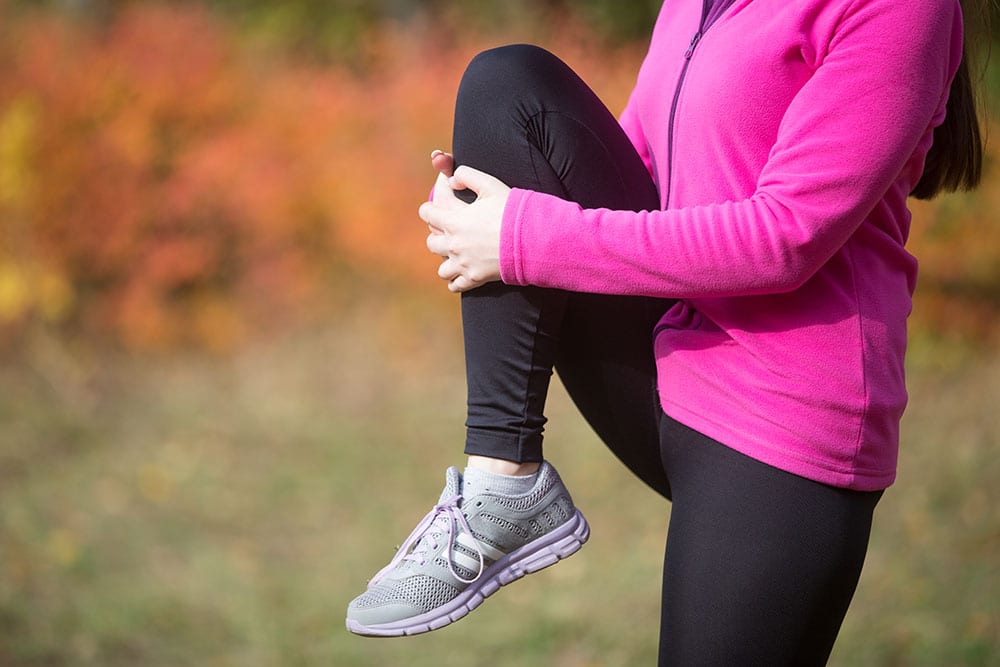If you want to make improvements to your fitness levels and endurance, you have to push your body to its current limits, and then do it again the next time you hit the gym. However, the moves that train your body to better conserve oxygen and build strength can also make your muscles feel sore and tight. We’ve all heard the workout adage “No Pain, No Gain,” but when you’re experiencing more than just the delayed soreness from increasing your weights, pushing through workout pain may not be the smartest option. With the health resolutions of 2017 right around the corner, how can you avoid knee pain by heeding the warning signs of pushing too far?
Bodybuilding for Beginners
To have a better understanding of the workout pain you should expect and the warning signs that you’ve pushed too far, it’s important to know the process by which exercising builds a stronger body. Skeletal muscle, the tissue you’re working on when working out, is comprised of thread-like fibers. Any type of activity that puts an unaccustomed load on your muscles (walking, running, jumping, calisthenics, lifting weights) will cause microscopic tears in them, which the body then scrambles to rebuild (into new, stronger muscle) while you rest. This also results in muscle soreness, which the American College of Sports Medicine defines as Delayed Onset Muscle Soreness, or DOMS. This type of ache is different from acute pain, which you could feel as a warning sign in your joints or where your ligaments and tendons attach to bone if you’ve got poor form or have pushed too far.
No Time For Knee Pain
If you’ve established the muscle soreness you’re feeling after workouts is typical, how can you determine when it’s okay to proceed if you have joint pain?
- Mild pain in stiff joints can be normal when you just start moving, but after a few minutes of warm up, you should expect some relief. “Our joints and muscles get nutrition through movement,” explains A. Lynn Millar, PhD, professor of physical therapy at Winston Salem State University in NC. “Once you start to move around a little you’ll improve the lubrication and circulation around that joint.”
- Moderate pain in joints can be your sign to focus your workouts on a different area for a couple days. If you’re experiencing knee pain, decrease the intensity of your activity, and if pain still worsens, work on the upper body until your joints are rested and pain subsides. If pain becomes severe, you should stop activity immediately and contact your physician.
- Joint Pain after workouts could be your warning sign to switch to an exercise that puts less pressure on your joints. “If you need an elaborate brace or have to take ibuprofen constantly, it’s a pretty good sign that your activity is too hard on your joints,” states James O’Dell, MD, Rheumatologist and president of the Rheumatology Research and Education Foundation. Trying something lower impact like swimming, yoga or biking is great for people with joint pain.
Worried About Workout Pain?
At Health Star Clinic, we offer a wide variety of pain management services, and our multidisciplinary team of medical doctors, chiropractors and physical therapists provides fast, comprehensive pain relief treatments for our patients. Contact us today to learn more about our treatment options and therapeutic approach to care!

